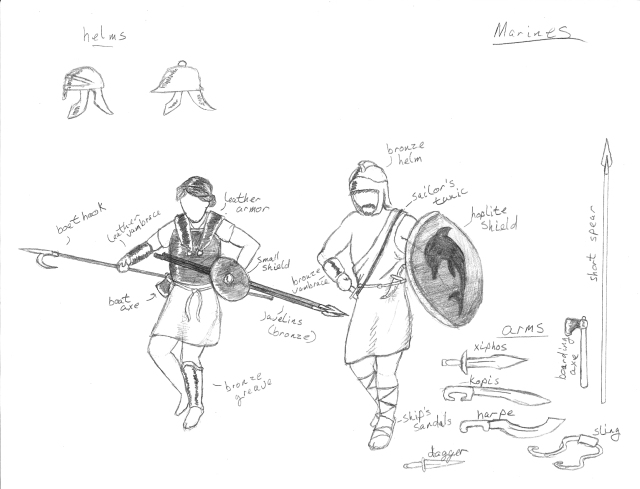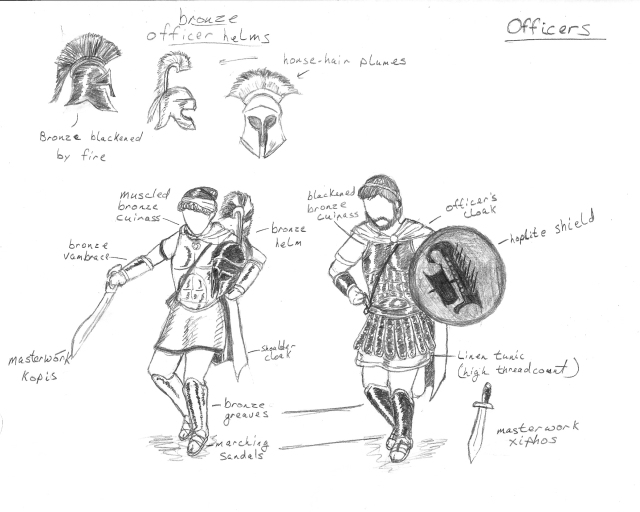Tall, bearded, and powerfully built, the raiders bore shields and weapons of war that morning. Spears were most common, though some carried axes, broadswords, or javelins. The younger raiders bore simple round shields, smaller than those carried by the Tollesian hoplites. The more experienced warriors preferred taller, oval shields, gripped behind the boss rather than strapped to the arm. Some wore shirts, though others went bare-chested. They wore blue and black war-paint and the veterans bore garish, angular tattoos to display their accomplishments in battle. Chief Getorix wore a brigandine of leather and bronze, while a couple other nobleman warriors wore leather armor. —Excerpted from First Empress
Barbarian auxiliary designs. Female and male versions. Feedback is always welcome.
Barbarian mercenary auxiliaries for Queen Viarra’s army. In effort to supplement her forces, her majesty is by no means ashamed to hire mercenaries from Gannic tribes allied to her hegemony. (Vi’s mother was a Gannic princess, after all). Though these auxiliaries’ equipment and martial training is generally inferior to that of Tollesian soldiers, the Gan are renown for their natural ferocity and prowess and are far more at home in the hills and woodlands than most hoplites.
Not as organized as Tollesian armies, Gannic war bands tend to be fairly hodgepodge, consisting of seemingly random groupings of archers, skirmishers, spear or sword infantry, and/or light cavalry centered around a war chief and his warrior-elite. Most warriors go unarmored, with bronze or brigandine armor worn mainly by Gannic nobility who can afford the expense. Their weapon- and armor-making skills are generally inferior to the Tollesian techniques, as are their mining and smelting techniques. Thus bronze weapons are more common than iron, and arrowheads of bone or obsidian are still fairly common among their hunters and archers.
I based the Gannic tribes from the Vedrian highlands most closely on my research on the ancient Gauls. I’d intended to draw concept sketches for just the Tollesian soldiers, but I may go ahead and draw some of the barbarian warriors as well, to illustrate their diversity as well.











 Reconnaissance Squad
Reconnaissance Squad